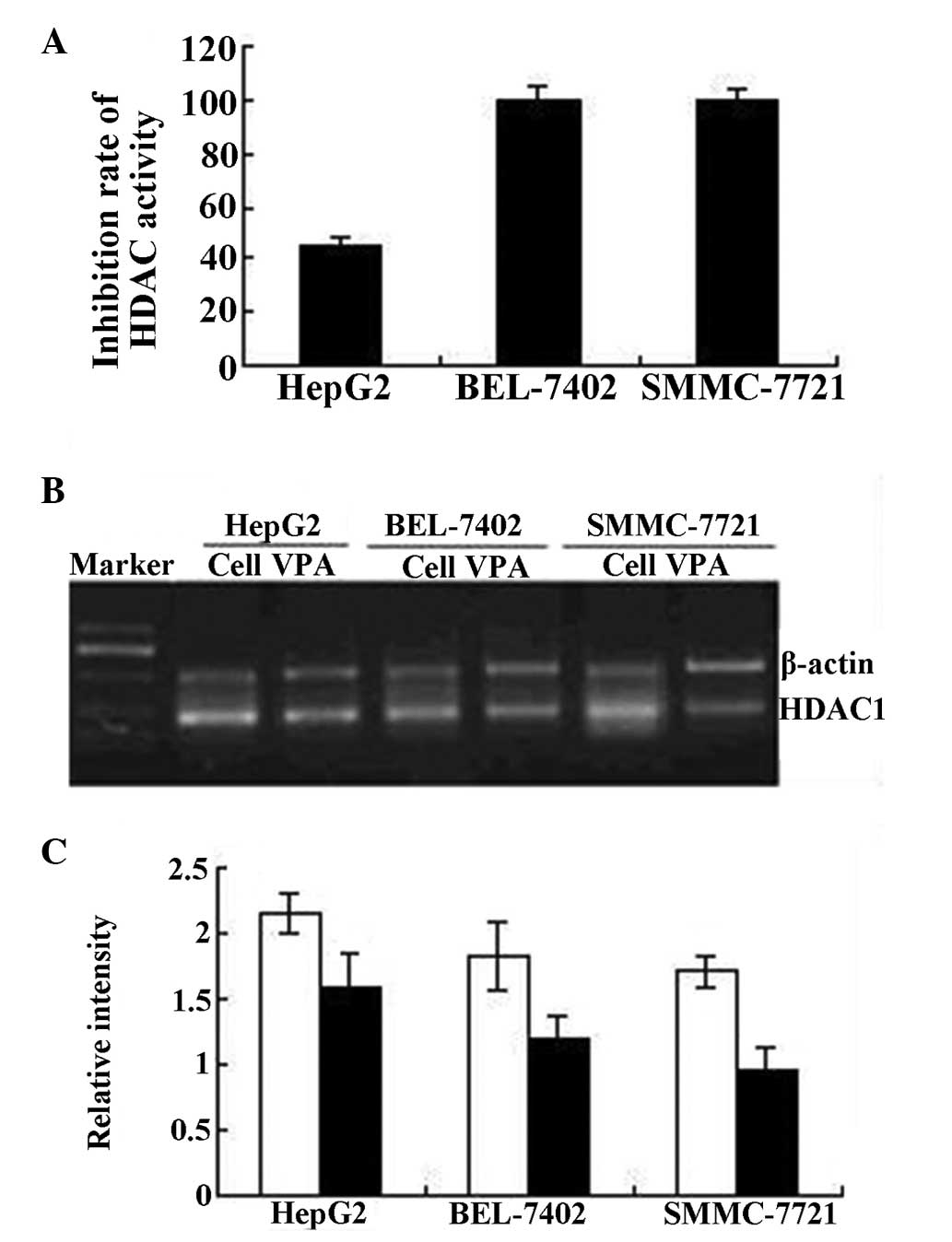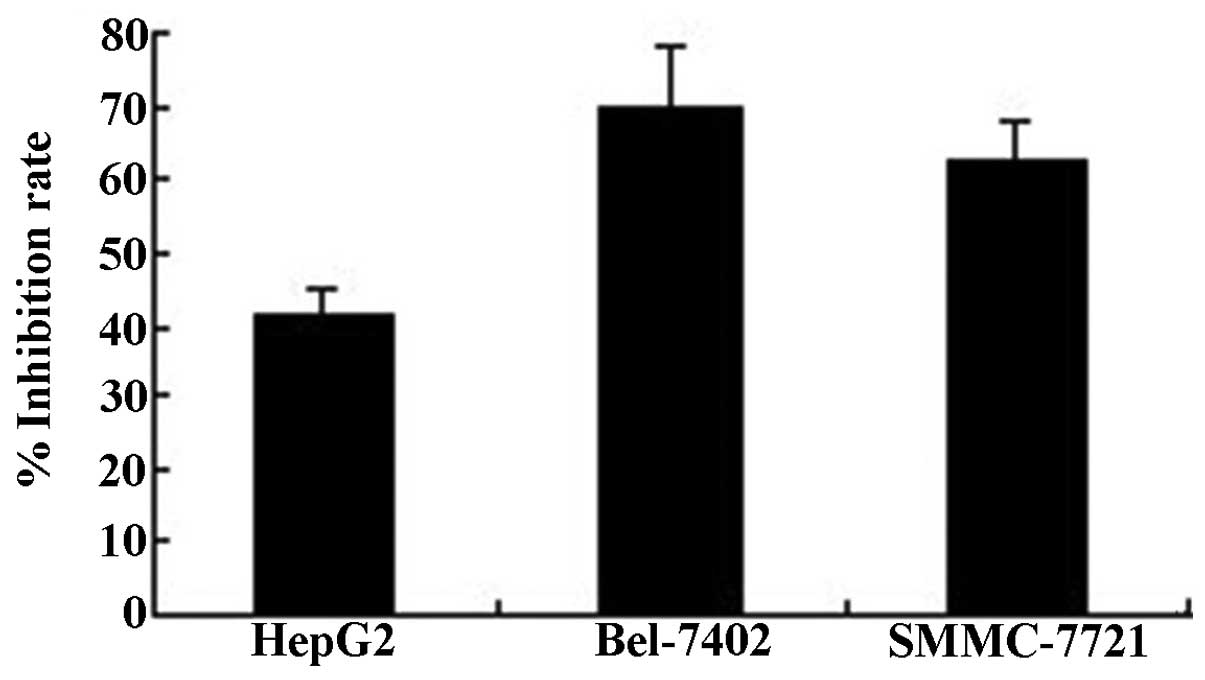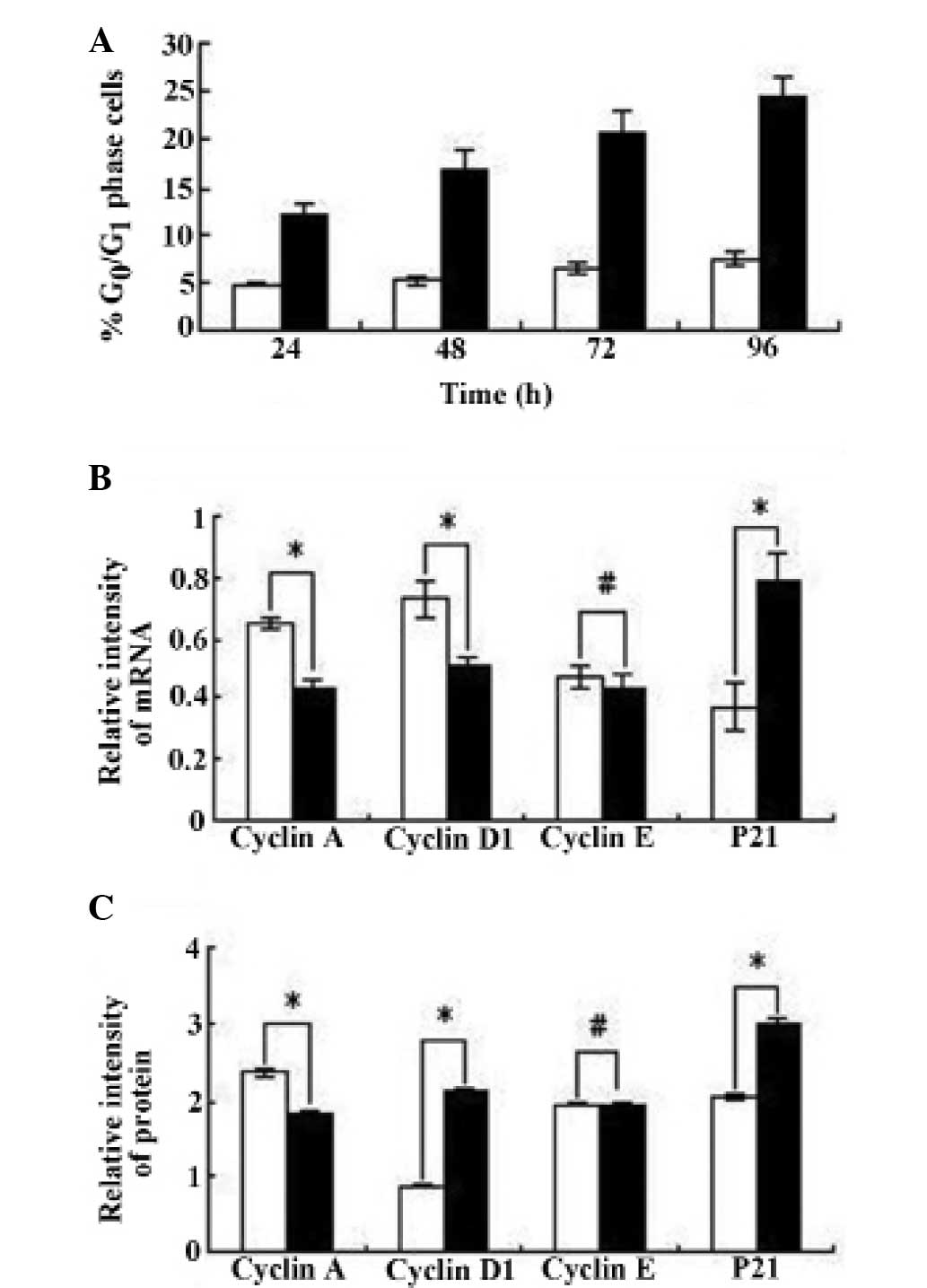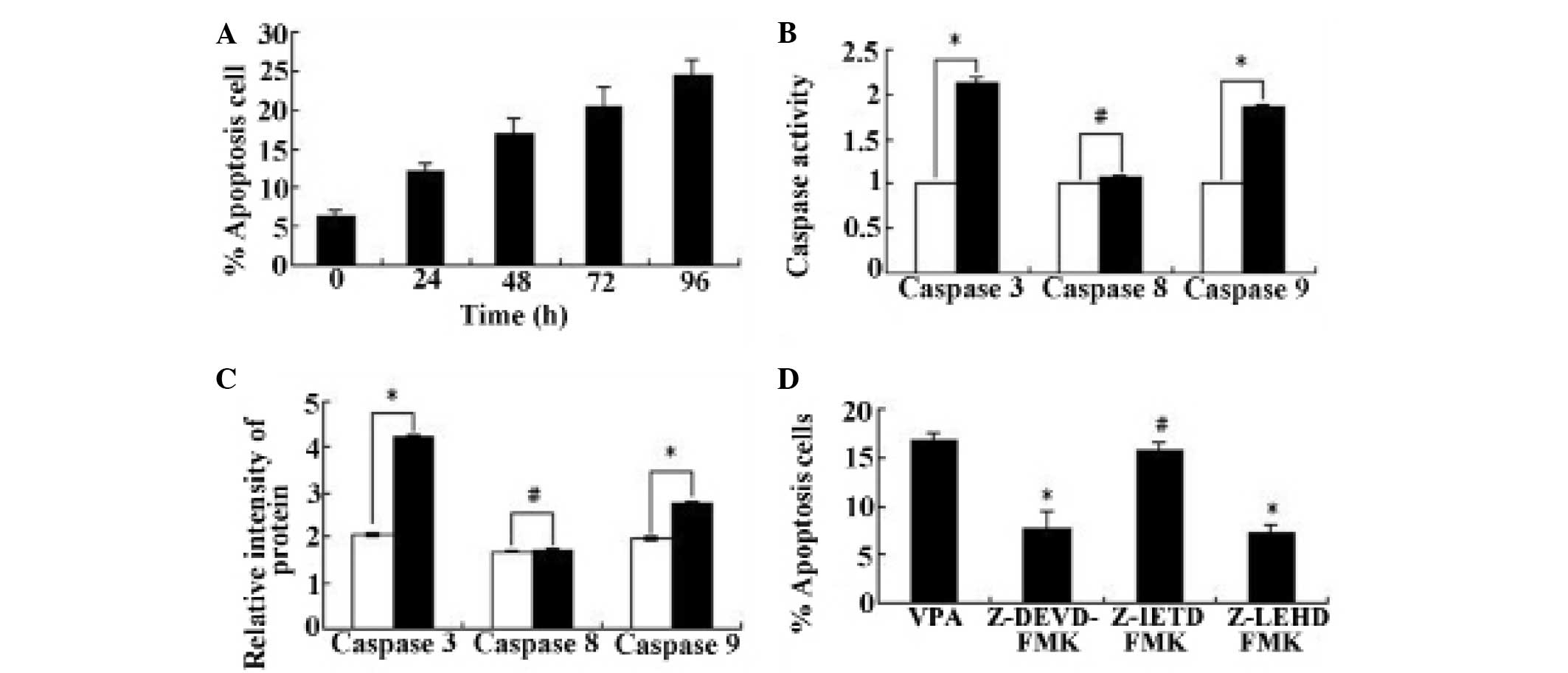Activation of the intrinsic apoptosis pathway contributes to the induction of apoptosis in hepatocellular carcinoma cells by valproic acid
- Authors:
- Published online on: November 25, 2014 https://doi.org/10.3892/ol.2014.2739
- Pages: 881-886
Metrics: Total
Views: 0 (Spandidos Publications: | PMC Statistics: )
Total PDF Downloads: 0 (Spandidos Publications: | PMC Statistics: )
Abstract
The level of histone deacetylation is closely associated with the genesis and development of tumors, but the antitumor effect and mechanism of the class I histone deacetylase inhibitor (HDACI) valproate acid sodium (VPA) on hepatocellular carcinoma cells has not been clearly demonstrated. In the present study, the antitumor effect and mechanism of VPA were measured in vitro. Firstly, it was found that, as an HDAC inhibitor, VPA could inhibit HDAC activity and HDAC1 gene expression in hepatocellular carcinoma cells and, as a result, an inhibition of cell proliferation was detected by MTT assay. Subsequently, the cell cycle and cell apoptosis profiles were analyzed using flow cytometry (FCM). The expression of the mRNA and protein of cyclins A, D1 and E and P21Waf/cip1 was measured by reverse transcription‑polymerase chain reaction and FCM analysis to determine the molecular mechanism of VPA‑induced cell cycle arrest. The activity and mRNA and protein expression of caspases 3, 8 and 9 were detected to determine the apoptotic pathway. Caspase expression was blocked by caspase inhibitors in order to observe whether the intrinsic or extrinsic pathway contributed to HepG2 cell apoptosis. The results revealed that the mRNA and protein expression of cyclins A and D1 was downregulated while the expression of P21Waf/cip1 was upregulated by VPA. The expression of cyclin E was only slightly affected by VPA. The mRNA and protein expression and activity of caspases 3 and 9 were upregulated by VPA. By contrast, inhibitors of caspases 3 and 9 could reverse cell apoptosis and there was no notable change in caspase 8 expression in any of these experiments. The intrinsic apoptosis pathway, but not the death receptor pathway, contributed to the induction of apoptosis in hepatocellular carcinoma cells. Furthermore, VPA could inhibit the proliferation of hepatocellular carcinoma cells by inducing G1 phase arrest and cell apoptosis. These effects were attributed to the change in the caspase level.













